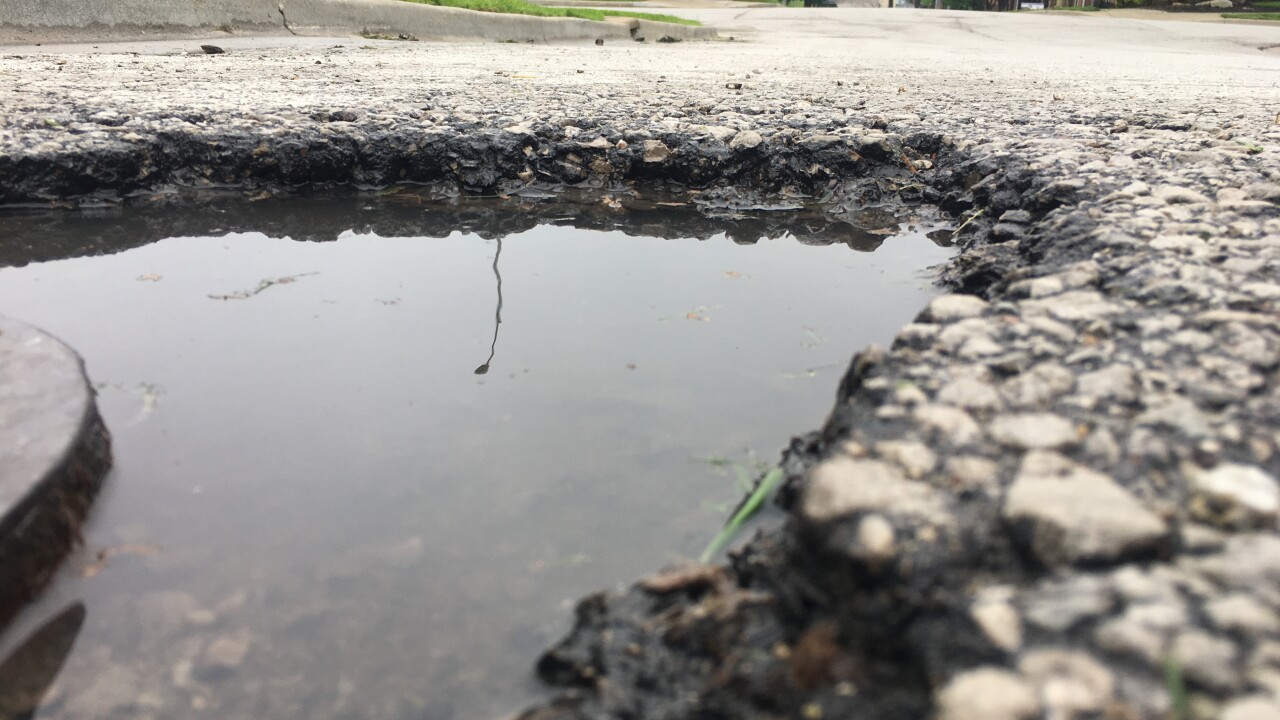KANSAS CITY, Mo. — After a winter that shattered records and seemed almost never-ending, fixing potholes is no easy task — and it's been made even more difficult by recent continued heavy rainfall.
Last week, Kansas City, Missouri, crews filled 3,300 potholes, using 91 tons of asphalt.
Kansas City Spokesperson Maggie Green said this number has been the average for the past several weeks. Each week, crews are working six days to fill between 3,000 and 4,000 potholes.
The heavy rainfall has potential to put a hold on — and maybe even reverse — some of the work they've done.
"A pothole is a compromise in the pavement," Green said. "And so any time you have water, it seeps into the cracks around that pothole and you do run the risk of it popping back up again."
Green said crews are still able to do patchwork when it's drizzling.
"They'll brush out the potholes with a brush and then they'll have big leaf blowers they keep in the back of their truck, so they'll blow the holes dry and then they can put the asphalt in," Green said. "So if it's pouring down rain, just consistently all-day rain, that's something that we have to monitor. Same thing if it's lightning at all — they don't want to put our crews at risk. But if there's a drizzle or a break in the rain at all our crews are getting right out there filling potholes."
The Missouri Department of Transportation stated it's also facing challenges with the rain.
"It makes it harder for the new asphalt material to bond, and creates a bond-breaker, and the new material just won't stay put and will come out with the traffic," MoDOT Asisstant District Maintenance Engineer Jimmy Shannon said.
Shannon said there aren't any specific spots that are really bad, but the issues are widespread across the district.
"You really need the pavement to be dry. Even if the rain stops falling, the pavement will hold onto that moisture, so we need that moisture to dry so these back-to-back rains that we've had are making it even more challenging to make the repairs," Shannon said. "There's a lot of factors that go into how we make our repairs. If there is an immediate hazard, we'll make a temporary repair, but for the more permanent fixes, we'll square off the potholes and really get a good bond to get more of a permanent fix. We do have some contractor partners that do some emergency repairs if we have larger area that needs to be milled out and overlayed. So we have them on board, too."
Compared to years past, MoDOT stated it has a lot more pothole repairs that need to be made.
"We're able to get out there and make the repairs — it's just trying to do so off peak hours so we are not impacting traffic more than we have to," Shannon said. "To go out and make our pothole repairs safely is the number one priority for us both for the traveling public and for our crews."
To learn more about reporting a pothole, click here.





